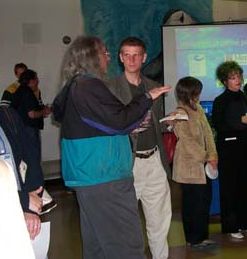Spent the whole day yesterday in Vancouver at the Merlot conference, though I must admit I probably spent as much time catching up with colleagues as I did in the sessions themselves. Rather than re-post my session notes here verbatim (which I must admit doesn’t typically do a lot for me as most of the context is lost and difficult to reconstruct) I thought I would just post some of the notable points I heard.
Session on Transforming Curriculum – U of T’s ATRC/TILE
If you ever get a chance to hear anyone from the Adaptive Technology Resource Centre at the University of Toronto speak, go and see them. So far every one I have met from there impresses me – they really *get* this stuff in a deep way. Specifically, when they think about the issue of accessibility, they get that it contains the smaller word but bigger concept of “access”. So that in addition to designing sites that work for disabled users who need to use assistive technologies, you can also be addressing issues of viewing sites with alternate browsers, alternate devices, in other languages, at different connection speeds. These are not all the exact same issue, but many of them can be addressed by very similar strategies and approaches. They also bring the idea of learner preferences into the fold so that both prior learning and learning styles become just other things to consider in re-presenting content. They are working on using the IMS learner information profile (LIP) as well as accessibility extensions to it, and have been building out technology (most notable the open-source CMS ATutor).
They outlined 5 major strategies (I missed one of them; the other 4 were:
- separate content & structure from presentation
- the independence of function from control
- implement session specific preferences
- use the standards
These probably all seem like pretty straightforward to some but I am consistently impressed with the breadth of their attempts and implementations.
Two other noteworthy things for me in their demo of their learner preferences system were:
- one of the choices was for the learner to specify the location of their own style sheet. I’ve seen this before but it makes tons of sense in systems (like a CMS or portal) where one can expect the user to return many times
- in asking the user to identify how they wanted the content to be adapted, instead of focusing on technology (‘give me a version that works with a screen reader’) or on the user’s ‘condition’ (give me a version suitable for color blind people’) they simply asked, in clear language, what you’d like the system to do: “make the text easier to read” “give me alternatives to auditory content.” They then followed that screen up with more specific choices, but I liked the way they phrased the question.
This was the first session I made it to that day (it’s a surprisingly long trip from Vancouver Island to Vancouver) and I think probably the most satisfying of the day for me. – SWL

